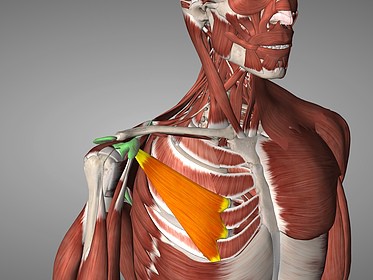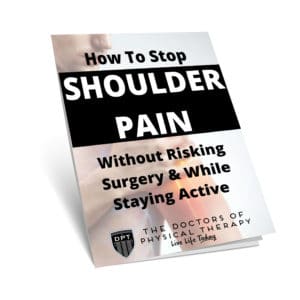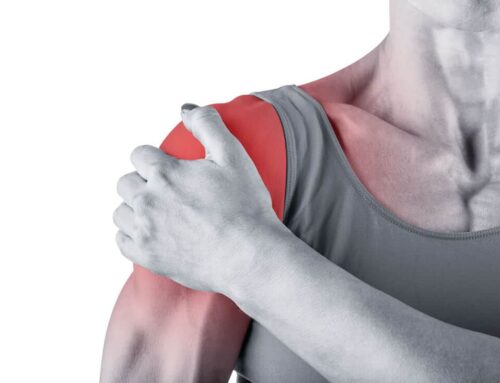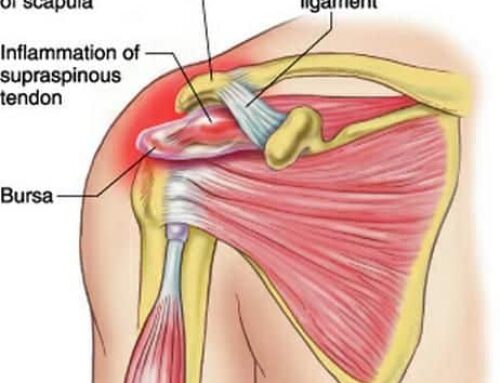Decreased shoulder mobility can really put a damper on your lifestyle. It can lead to pain with putting items up overhead, problems putting on/taking off clothes, cause sleeping disturbances, or make it difficult to swat at your kids when they’re fighting in the back seat. If you like to run, lift weights, or be generally active, modifying your movements because of shoulder pain when you’re exercising can also lead to neck pain and headaches.
These are 4 of the best shoulder mobility exercises to give you some quick relief. Clearly, fixing shoulder pain is more complex than 4 exercises, but these will help you begin to address your shoulder pain.
1. Soft tissue to the pec minor
In many cases, the pec minor can be the root of shoulder dysfunction. It attaches to the ribs and more importantly, the shoulder blade. When the pec minor is restrictive it can keep the shoulder blade from moving freely. This puts the rotator cuff muscles at a disadvantage when it comes to raising your arm. Pressure to the soft tissue in the pec minor area can relieve the scapula from being pinned down and improve shoulder mobility by giveing the rotator cuff a break. See this video for some tips on how to use a lacrosse ball to get this done.
2. Stretch the pec minor
The key here is getting the two attachment points of the pec minor as far from each other as you can. It attaches to the front of your shoulder and ribs 3-5 (which are about ⅓ of the way to the bottom of your ribcage). To properly perform this stretch, use a doorway and place your elbow on the frame slightly above shoulder height. Step through the doorway with the same leg and make sure to keep your shoulder down away from your ear. The result should be a strong stretch in the front of your chest and shoulder.
3. Soft tissue to the post cuff
The post cuff is made up of primarily your rotator cuff muscles. These are the muscles that are responsible for the stability in your shoulder and are used for most movements. When they sense that there may be injury to the shoulder, they can tighten up protectively and decrease shoulder mobility. This can also accidentally increase the dysfunction by introducing another mobility restriction. The best tool for this is once again a LaCrosse ball, see the video below. You can alternatively use a foam roller by lying on your back on the foam roller and targeting the same spots as in the lacrosse ball video.
4. Stretch the posterior capsule
The capsule is essentially a Saran wrap around the shoulder that provides stability but it can also get immobile when the shoulder has had inflammation. To perform a posterior capsule stretch place your arm straight out in front of you with your palm up. Use the other hand to pull the elbow in close to your chest and across your body. Be sure to keep the arm you are stretching down.
Blog image: https://www.nps.org.au/news/non-traumatic-shoulder-pain-in-general-practice-a-pragmatic-approach-to-diagnosis
To bring it all together: If your shoulder hurts try these strategies to get some relief but keep in mind usually when pain starts affecting your shoulder, there’s usually a reason why. There could be a faulty movement pattern, a mobility restriction, or perhaps you just overdid a workout without proper warm up. Make sure you don’t get caught up just chasing the pain and managing with these exercises as spot treatment. If you’re searching for some great shoulder health exercises be sure to check out our other posts.
If you continue having shoulder pain come on in to DPT. We treat athletes from all different backgrounds: golfers with mobility issues, tennis, baseball, lifting, CrossFitters with pain in their front rack – and would be thrilled to help get you back to your sport without pain.






